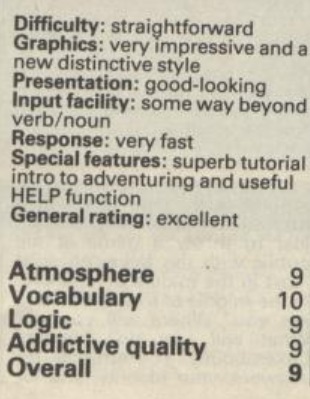Home - Adventure games - Mindshadow
Mindshadow
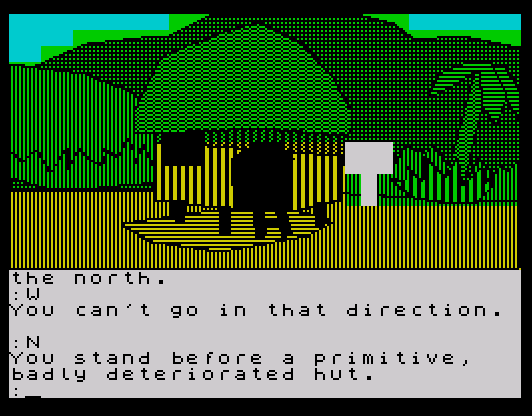
- Release year: 1985
- Publisher: Activision
- Authors: Interplay Productions/Softstone Ltd
- ZXDB archive entry at Spectrum Computing
Background
Activision weren't typically known for producing Spectrum text adventures, but I picked this one as it somehow passed me by when it was released, and I thought I'd give it a proper go, many years later.
We're not given not much background to the game. That's because we've got a classic "you've lost your memory" scenario. The player wakes up on a desert island not knowing where, who, or... err.. why(?) they are... The goal is a simple one - to regain your memory.
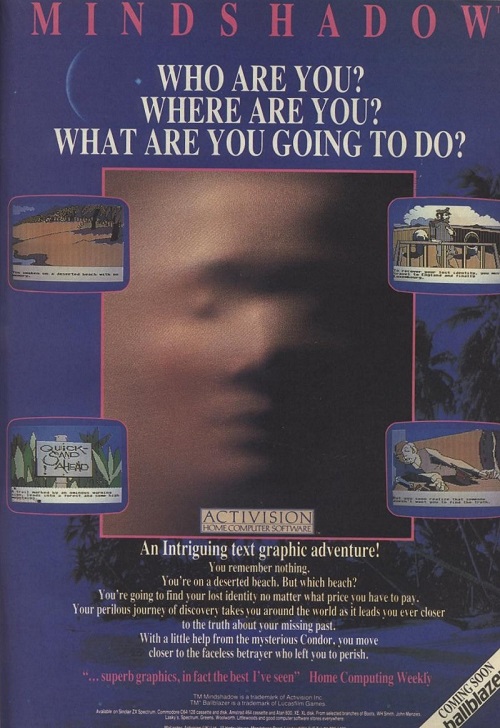
As well as a few common verbs to use, there's also a THINK command. The player can use this when they learn of a name, person, place or object to see if they can jog their memory of said entity.
The game is actually in two parts. Upon completion of part 1 you save your game and load it at the start of part 2. But before even part one, we're treated to a...
Tutorial
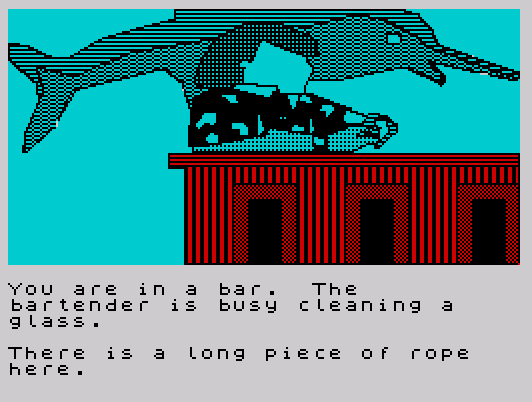
Yep, we've got a mini-adventure, a few locations - complete with graphics - to give the player a few pointers about how to play the game. In fact, how to play text adventures in general.
My first thoughts were "wow, that's some modern, progressive game design" - well, until I realised that you don't actually PLAY the thing. It basically just runs through the instructions without you having to type anything.
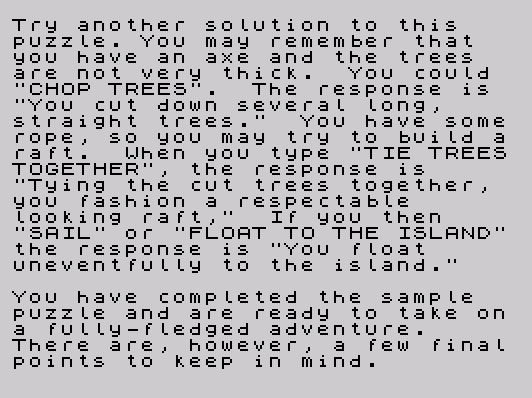
Well it's better than nothing I guess, handy for anyone who might be playing ...ahem... "sans inlay", and a nice bit of extra effort put in by the authors.
Someone else we're introduced to, is JEEBS, the Condor:
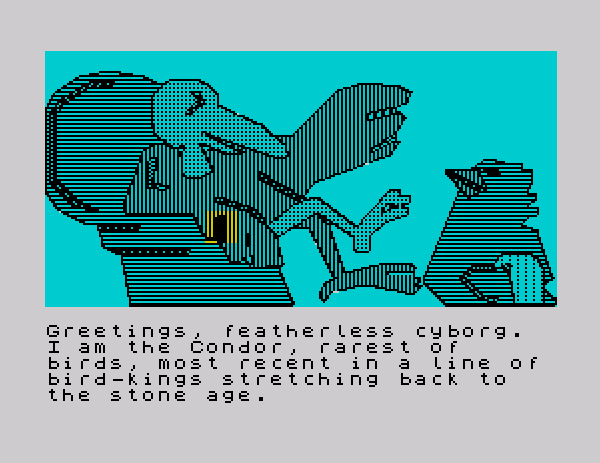
This loquacious character appears when you use the HELP command, which we're told we can use 3 times in the adventure. Jeebs doesn't provide the player with lots of help, but what he does give is excellent - just the right amount of info for some of the key puzzles.
Anyway, onto the game - well, part one anyway. Just to say there may be *** MINOR SPOILERS *** below. I'll try to avoid puzzle solutions (more than some of the magazines did anyway), but some of the screenshots may hint at what the player is going to encounter.
Part one - "where am I?"
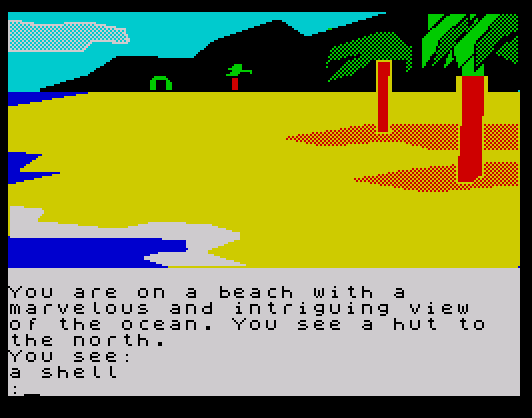
One thing that hits you at first is that there are graphics - lots of them. In fact, every location has a graphic, and although not appearing instantaneously, they're drawn reasonably quickly. A few graphics are 'recycled', but not many.
Given that there are apparently 80+ locations in the game, this is quite a pleasing aspect of the game, though some of the drawings of people's faces have a 'toddler sketch' vibe, as you might see from the screenshots below.
This doesn't mean that the text aspect has been scrimped on either. There are LOTS of excellent item descriptions, and the parser is very good, with little in the way of the dreaded "I CAN'T" rearing its head after every input. And the more immature gamers among us will of course be pleased to hear that there are obligatory responses to common swear words.
So our first goal turns out to be to get off the island. Looking at the ocean in the first location tells us that there's a ship visible, which gives us a clue to a potential method, though not how we're going to get to it. So we begin by exploring the island a bit.
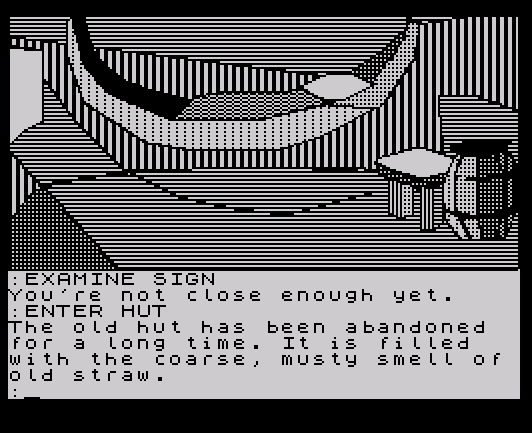
A nice aspect of Mindshadow is that clues and interactable objects appear in some pictures, but NOT the text description. I quite liked this, and there wasn't anything that had me squinting to work out what it was.

Another well-thought out element is that if there's a lot of text it can scroll out of view before the player sees it - however, pressing ENTER immediately toggles the graphics off and brings it into view.
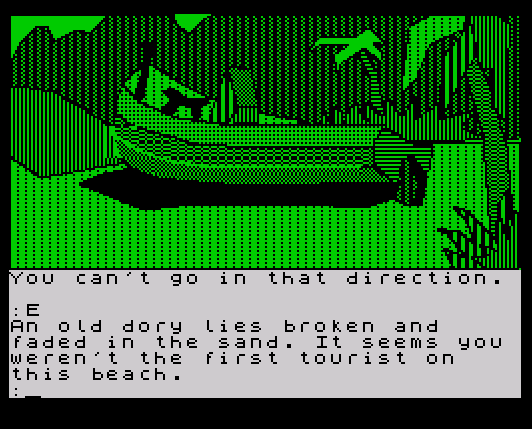
Getting off the island turns out to be relatively easy. The place is easily mappable, quite small, and the puzzles are eminently logical. It IS possible to die in the game, and there are dead ends - ways to make it impossible to complete the game and needing to revert to an earlier save. Normally I have a strong dislike of both of these, but playing it on emulation I didn't feel that the game was unfair or frustrating at any point.
Additionally, the game lets you fast-travel to locations with multiple commands (e.g. "W, N, N, E"), without visiting the intervening locations (and needing to draw each graphic). The more I played, the more I was impressed by this sort of player-friendly design.
Before you reach your next geographic locations (England and Luxembourg, as we're told in the advert), there's some more ocean-based adventuring to get through.
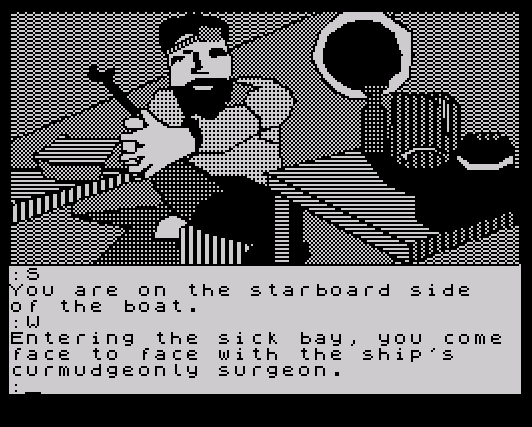
This naval jaunt is quite a short section. Less than 20 locations and only a few puzzles. Finally we manage to reach dry land on the shores of England, though I will admit that I called on Jeebs for a hint while I was on the boat.
Part two - England and err... Luxembourg
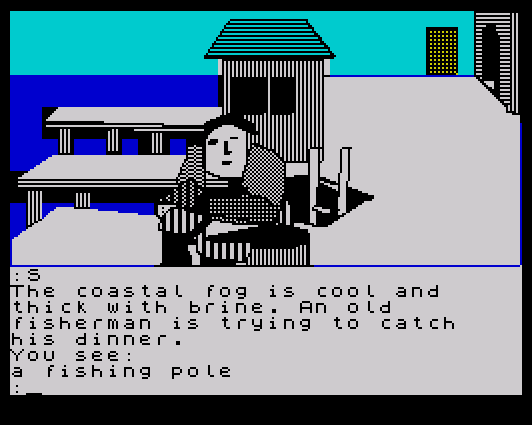
The second part of the game has a 007 vibe to it - well, I suppose if 007 hadn't got a clue who he was or what he was doing. There's a sense of intrigue, with hidden notes, secret passwords and furtive nods and glances from strangers you meet.
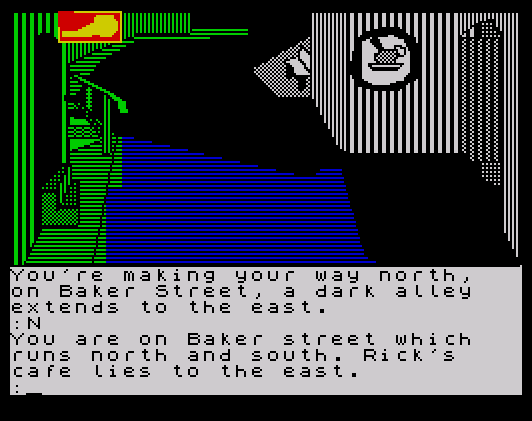
It's at this point that the THINK command starts to come in use... Not that it actually helps you solve the puzzles, but it starts revealing things about your past and identity.
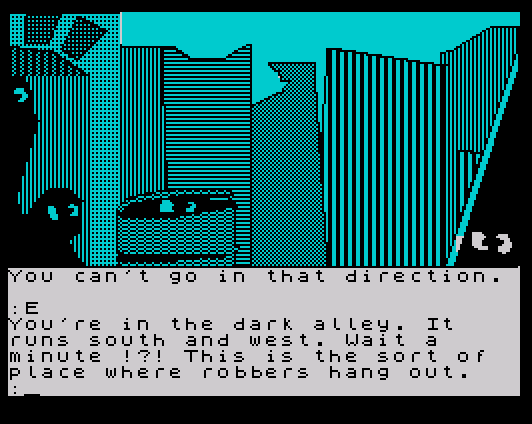
Hopefully it won't be too spoiler-y (as it says it in the advert) to say that you eventually find your way to Luxembourg, where the 'intrigue-ometer' starts shooting through the roof.
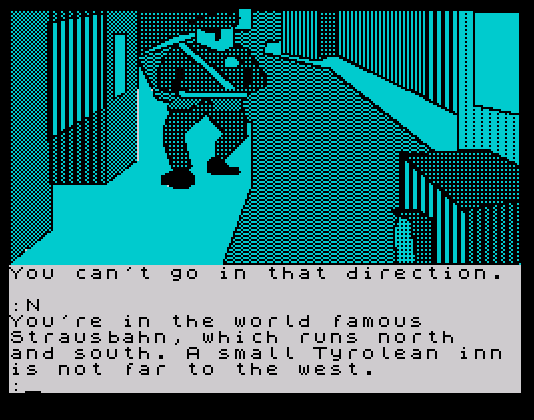
As you wander the streets and buildings in England and Luxembourg the atmosphere gets more tense, as you realise that you're caught up in something, and there are people out to get you.
At this point I'll admit that I was saving quite a few 'panic snapshots' in my emulator, though insta-death was a relatively infrequent occurrence. It's worth mentioning that the game actually has a QUICKSAVE option - not bad for 1985 - which would have certainly saved a few cassette heads back in the day.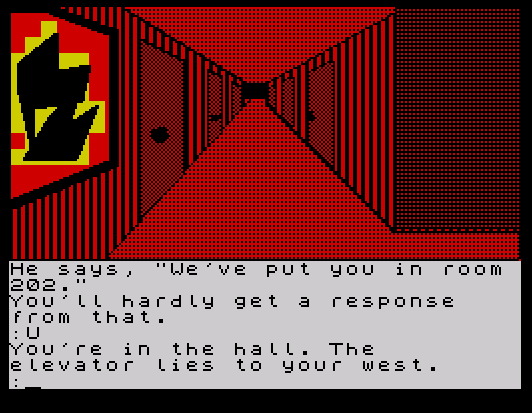
After a few death scares, the game reaches a climax. The ending is quite abrupt but if you're successful, suffice to say your memory is restored and a full explanation of the events that led to your island isolation is revealed.
Summary
Well as you can probably tell, I was pretty impressed with this game, and am slightly surprised that I didn't get to play it properly when it was released, as the game was well advertised and I was playing plenty of text adventures back then.
Although I was playing via the cushy medium of emulation, I finished the game without resorting to hints or walkthroughs (other than the in-game "condor-help"), which for me is a rarity as I'm by no means an expert adventure gamer. It may apparently be possible to reach the end of the game without THINKing of enough things, but I never got round to seeing if this was the case as you naturally want to use THINK when you discover something new in the game, and it's hard to miss things.
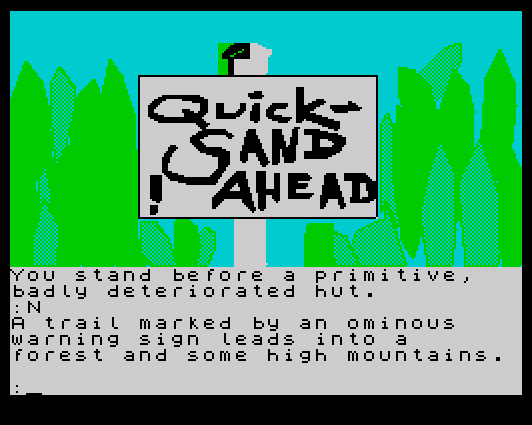
The puzzles are logical and the game atmosphere and story made me want to get to the end. But probably the best part of the game is the thought put into the parser and the response to player inputs - it's unlikely you'll be scratching your head trying to work out the precise turn of phrase that the game wants, like you get in many adventures.
The game's reception was generally positive, though not across the board:
Crash gave it a (deserved IMO) Crash Smash (90%) in their review, commending the graphics and the intelligent responses to player input. I'd agree largely with Derek Brewster's ratings on this occasion, though he was a bit critical about the lack of back story (I thought the premise was decent enough, though the memory loss idea could be considered a bit of a cliche I suppose).
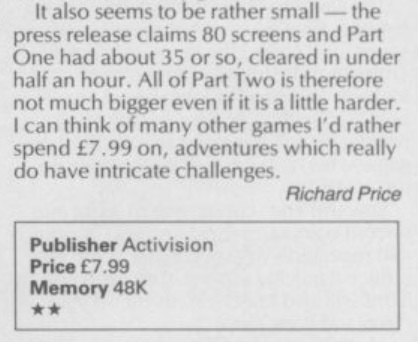
Sinclair User only gave it two out of five (40%) in their review. I thought this was a tad unfair; the reviewer seemed to find the first part too easy and the second part too hard (even admitting to rage-quitting!). I personally found the difficulty quite even throughout, as a not-particularly-seasoned adventure gamer.
So overall, a hearty recommendation from me. Scared of adventure games? Give it a try - I've found that early Speccy text adventures that your average person can complete without (a) hints and (b) too much trouble are few and far between. Mindshadow is happily in that cheerful bracket.
